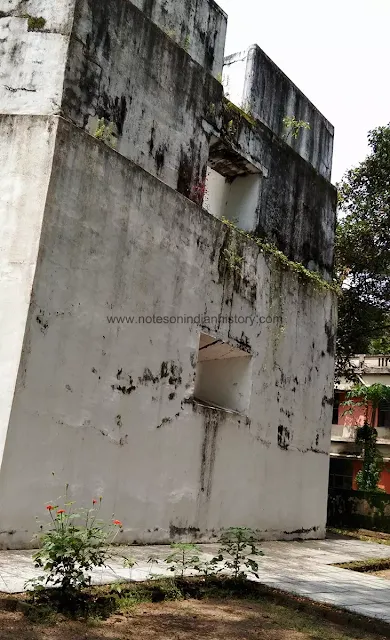Pallippuram Fort (Ayakotta)
Pallippuram Fort, situated in the Ernakulam district of Kerala, has been referred to by various names in European records such as Ayacotta, Jacottah, Jyacottah, Jaycotta, Munampam and Palliport. The name Pallippuram is derived from the nearby Manjumatha Church, also known as the Chapel of Our Lady of Snow, built by the Portuguese in 1503. In Malayalam, "palli" means church and "puram" signifies the surrounding area.
Pallippuram fort, known as Azhikotta or Ayakotta during its construction, was aptly named, as the words literally translate to "fort at the river mouth." As outlined in British documents, it is an outpost rather than a fort, built on the northern extremity of Vypin Island at Cochin.
The Portuguese constructed this impressive three-story fort, which was later seized by the Dutch in 1661. In 1789, the Dutch sold it to Travancore. One of the main reasons behind Tipu Sultan's invasion of Travancore in 1789-1790 was the Raja of Travancore gaining control of this strategic outpost along with the Kodungallur (Cranganore) fort from the Dutch.
During the initial stages of Portuguese colonization on the West Coast, they constructed three forts: Fort Manuel (also referred to as Fort Emmanuel) in Cochin, Fort Kodungallur (Cranganore), and Fort Pallippuram. These forts were established as strategic military outposts to safeguard their interests in the region. Ayakotta, the little fort at Pallippuram, is the only surviving monument of the early Portuguese era in India, that has not fallen into ruins, making it the oldest European structure still standing in the country. The Raja of Cochin graciously granted the Portuguese permission to construct this outpost on the northernmost point of Vypin, allowing them to keep a vigilant eye on the entrance of foreign ships to the Periyar River.
Gasper Correa described Ayakotta as the "Little Castle," stating it was built in 1507 to guard the entrance to the backwater. It is intriguing to note that he described it as an octagonal structure, with each facet designed to hold cannons and manned by around twenty soldiers. Both Correa and Day also referred to this fort as an octagonal building. However, the fort is actually a hexagonal structure.
The materials used in the construction of this fort are laterite, granite and wood. The whole of the masonry work consists of laterite blocks set in chunam, and the walls are expertly plastered with mortar for a smooth finish. Inside the fort, the floor is raised five feet from the ground level. Each face of the fort has three embrasures stacked atop one another, totaling eighteen for mounting cannons and guns.
Pallippuram fort, known as Azhikotta or Ayakotta during its construction, was aptly named, as the words literally translate to "fort at the river mouth." As outlined in British documents, it is an outpost rather than a fort, built on the northern extremity of Vypin Island at Cochin.
The Portuguese constructed this impressive three-story fort, which was later seized by the Dutch in 1661. In 1789, the Dutch sold it to Travancore. One of the main reasons behind Tipu Sultan's invasion of Travancore in 1789-1790 was the Raja of Travancore gaining control of this strategic outpost along with the Kodungallur (Cranganore) fort from the Dutch.
During the initial stages of Portuguese colonization on the West Coast, they constructed three forts: Fort Manuel (also referred to as Fort Emmanuel) in Cochin, Fort Kodungallur (Cranganore), and Fort Pallippuram. These forts were established as strategic military outposts to safeguard their interests in the region. Ayakotta, the little fort at Pallippuram, is the only surviving monument of the early Portuguese era in India, that has not fallen into ruins, making it the oldest European structure still standing in the country. The Raja of Cochin graciously granted the Portuguese permission to construct this outpost on the northernmost point of Vypin, allowing them to keep a vigilant eye on the entrance of foreign ships to the Periyar River.
Gasper Correa described Ayakotta as the "Little Castle," stating it was built in 1507 to guard the entrance to the backwater. It is intriguing to note that he described it as an octagonal structure, with each facet designed to hold cannons and manned by around twenty soldiers. Both Correa and Day also referred to this fort as an octagonal building. However, the fort is actually a hexagonal structure.
The materials used in the construction of this fort are laterite, granite and wood. The whole of the masonry work consists of laterite blocks set in chunam, and the walls are expertly plastered with mortar for a smooth finish. Inside the fort, the floor is raised five feet from the ground level. Each face of the fort has three embrasures stacked atop one another, totaling eighteen for mounting cannons and guns.









Comments